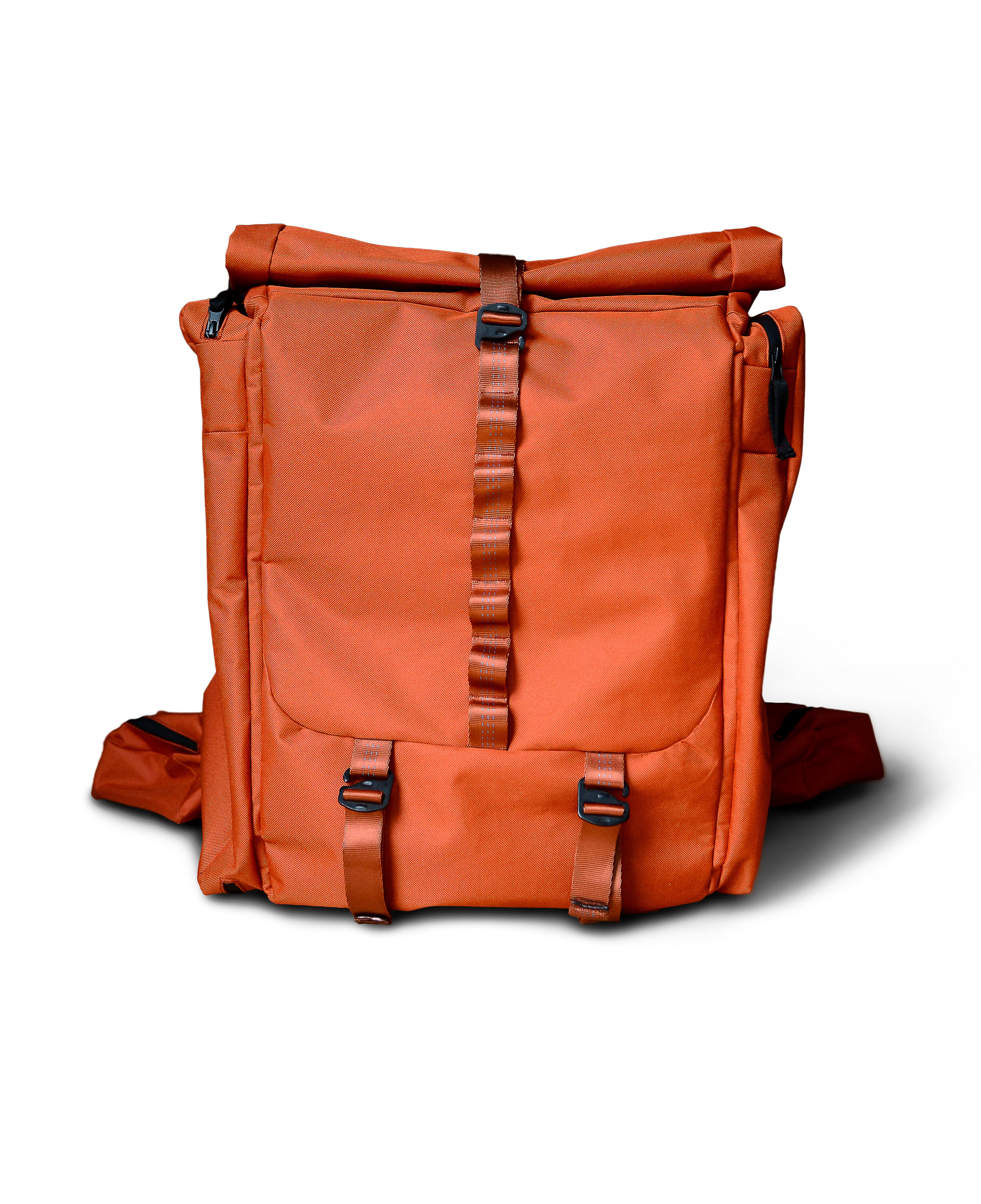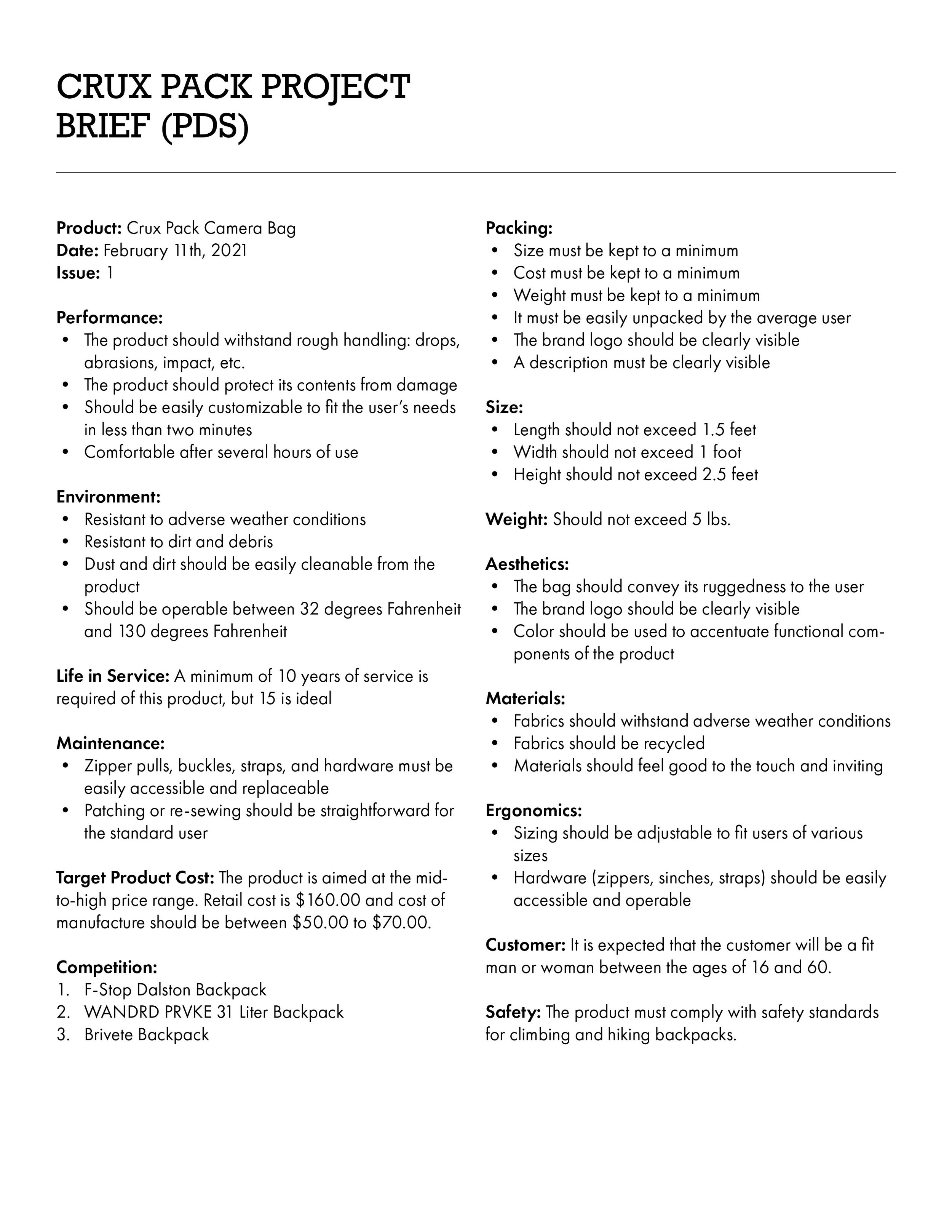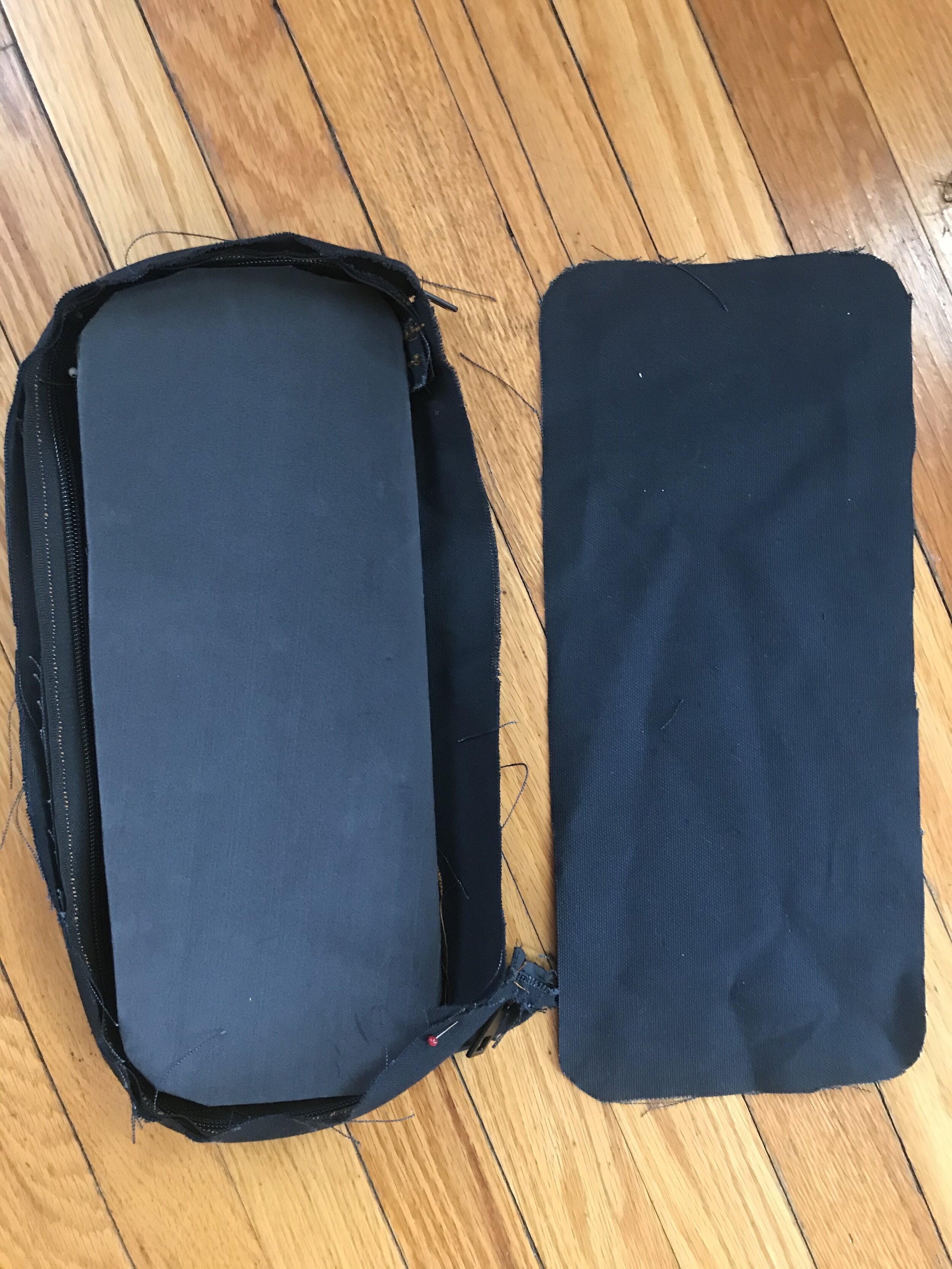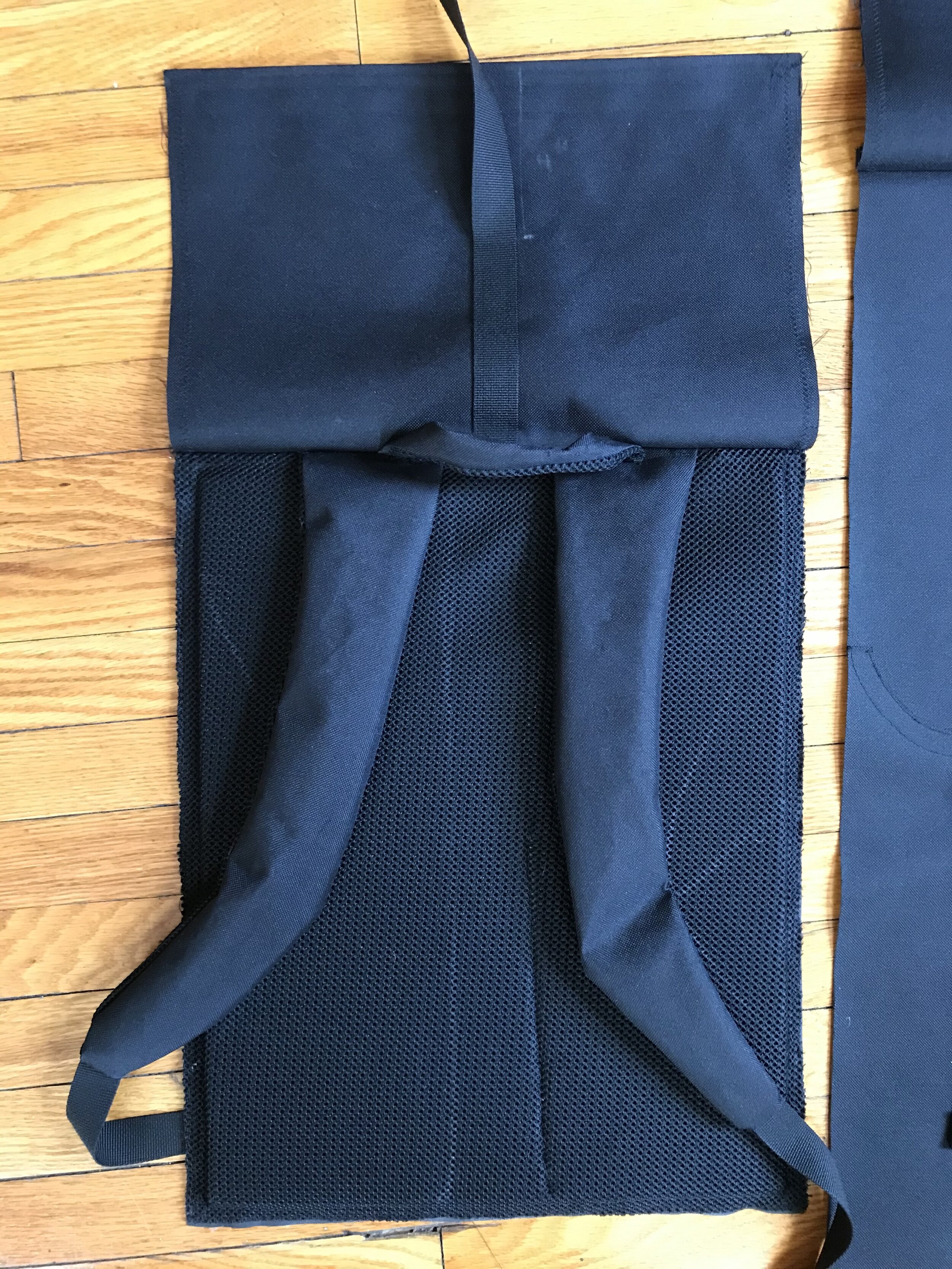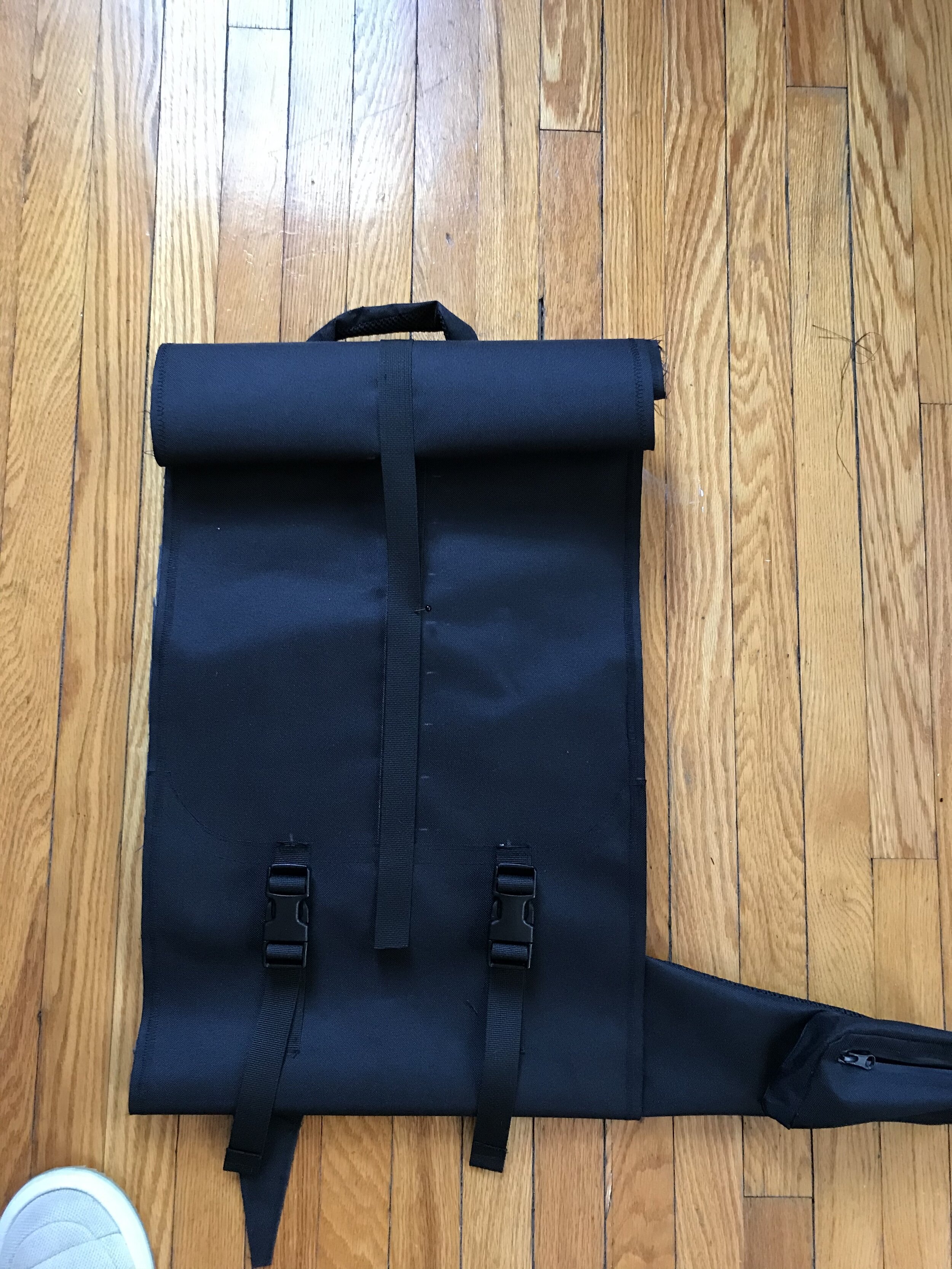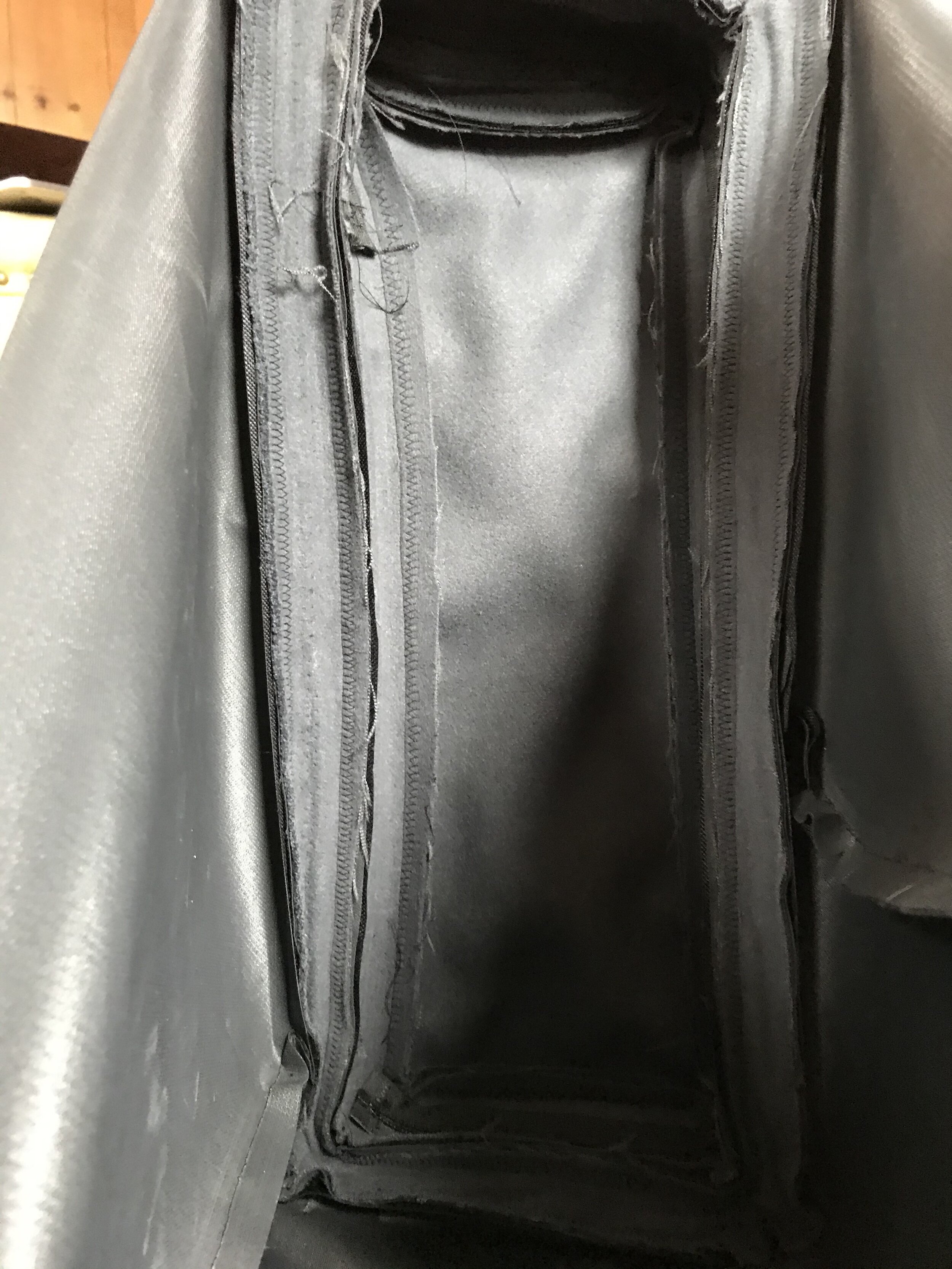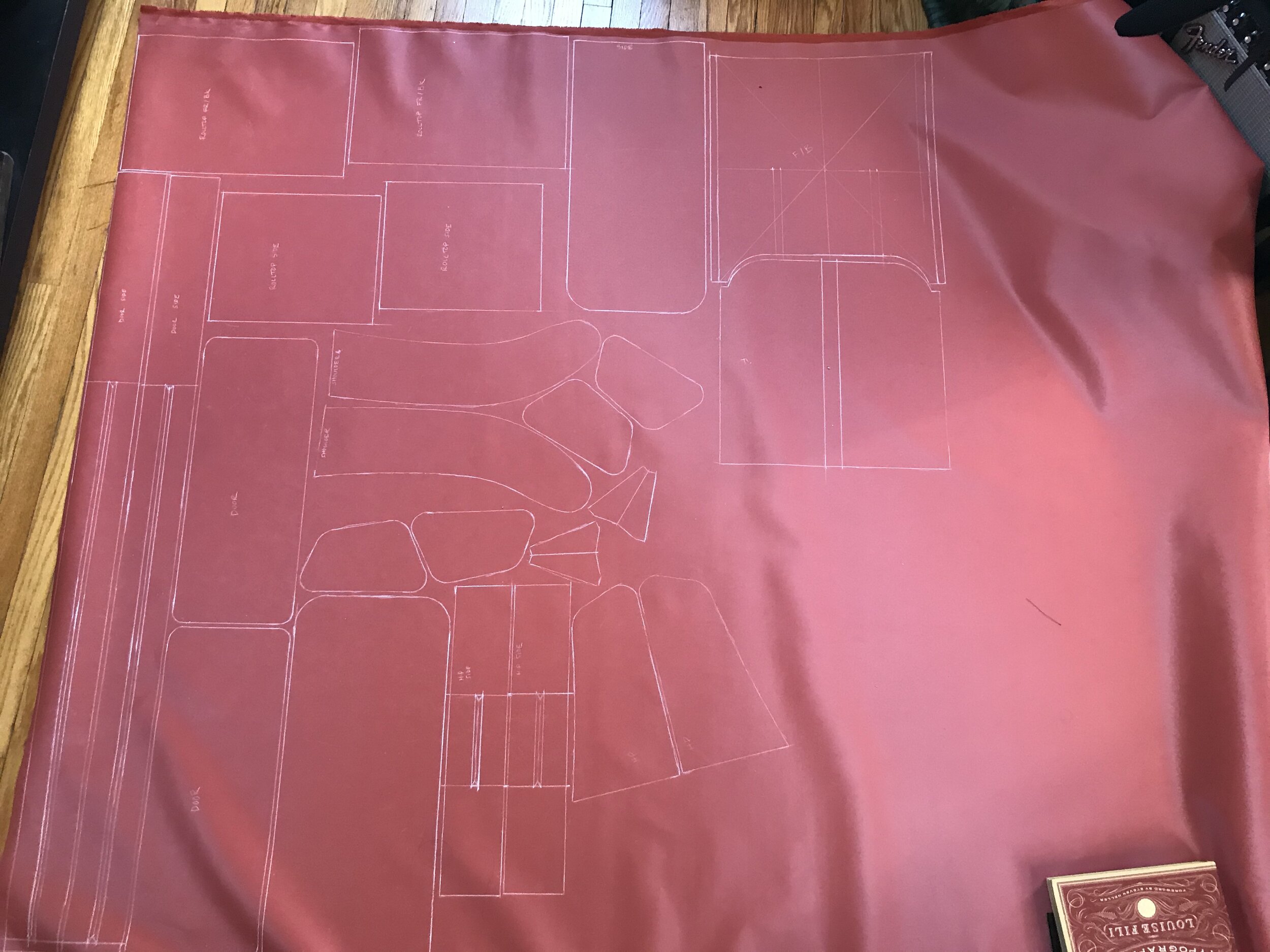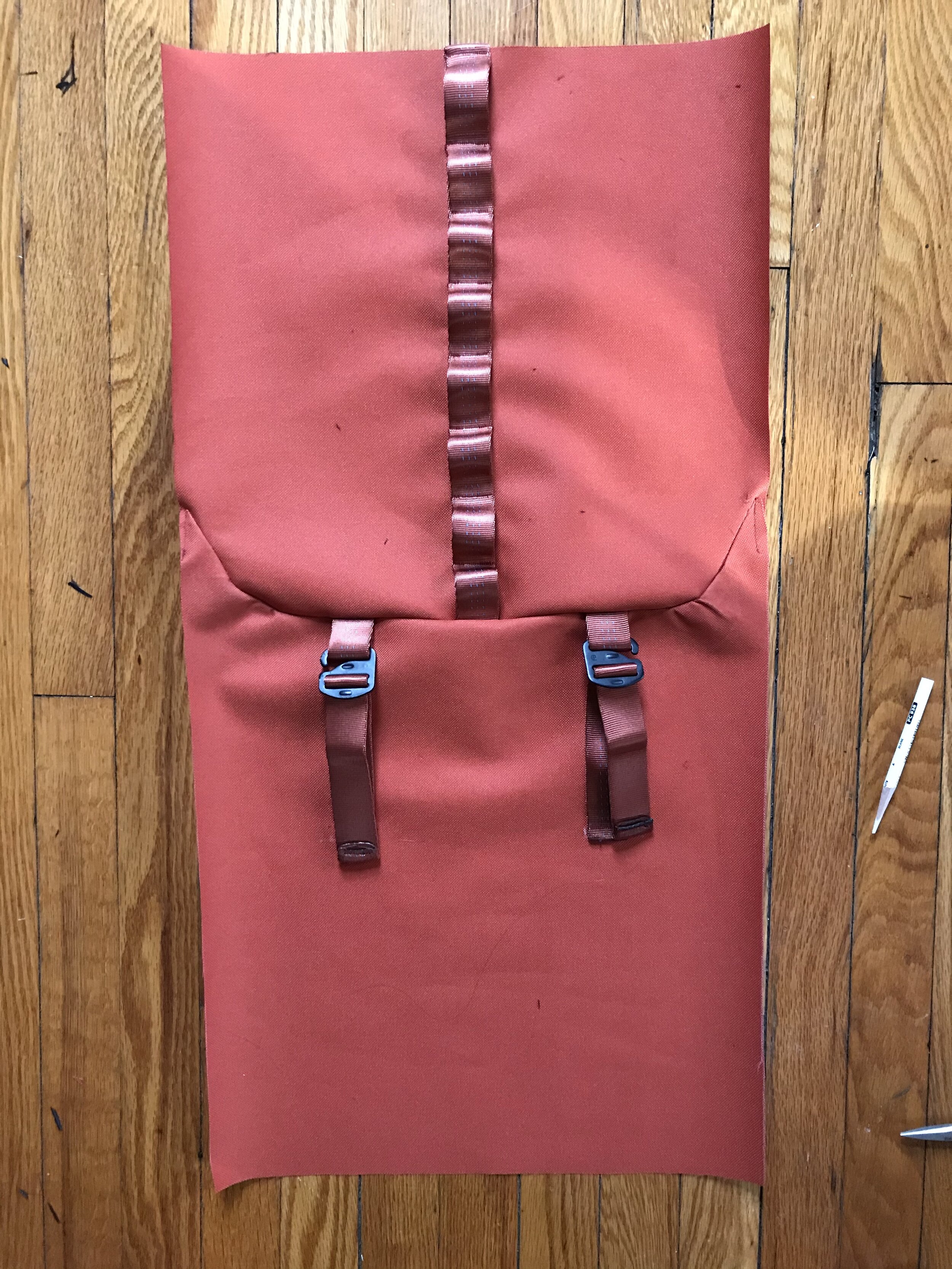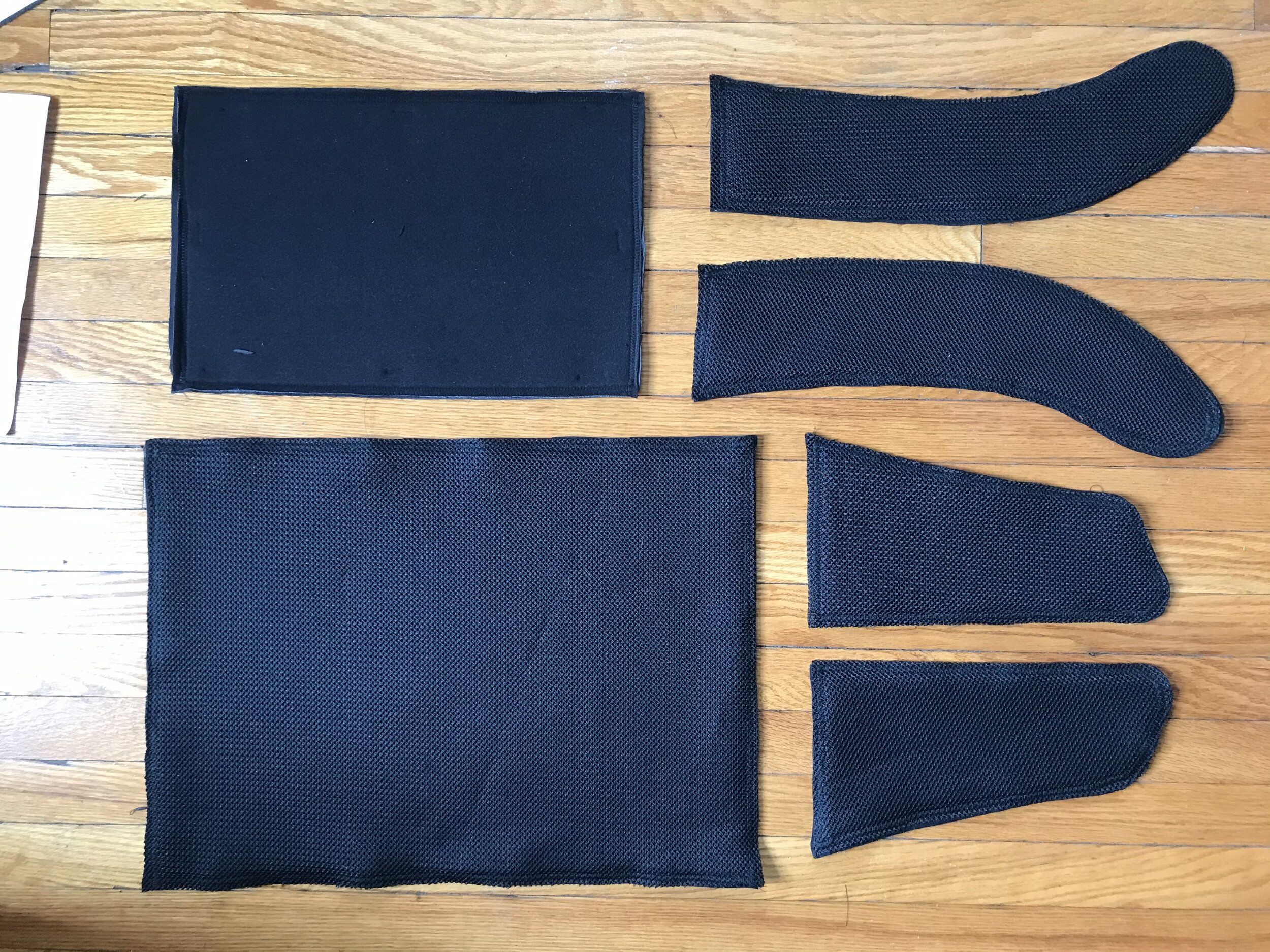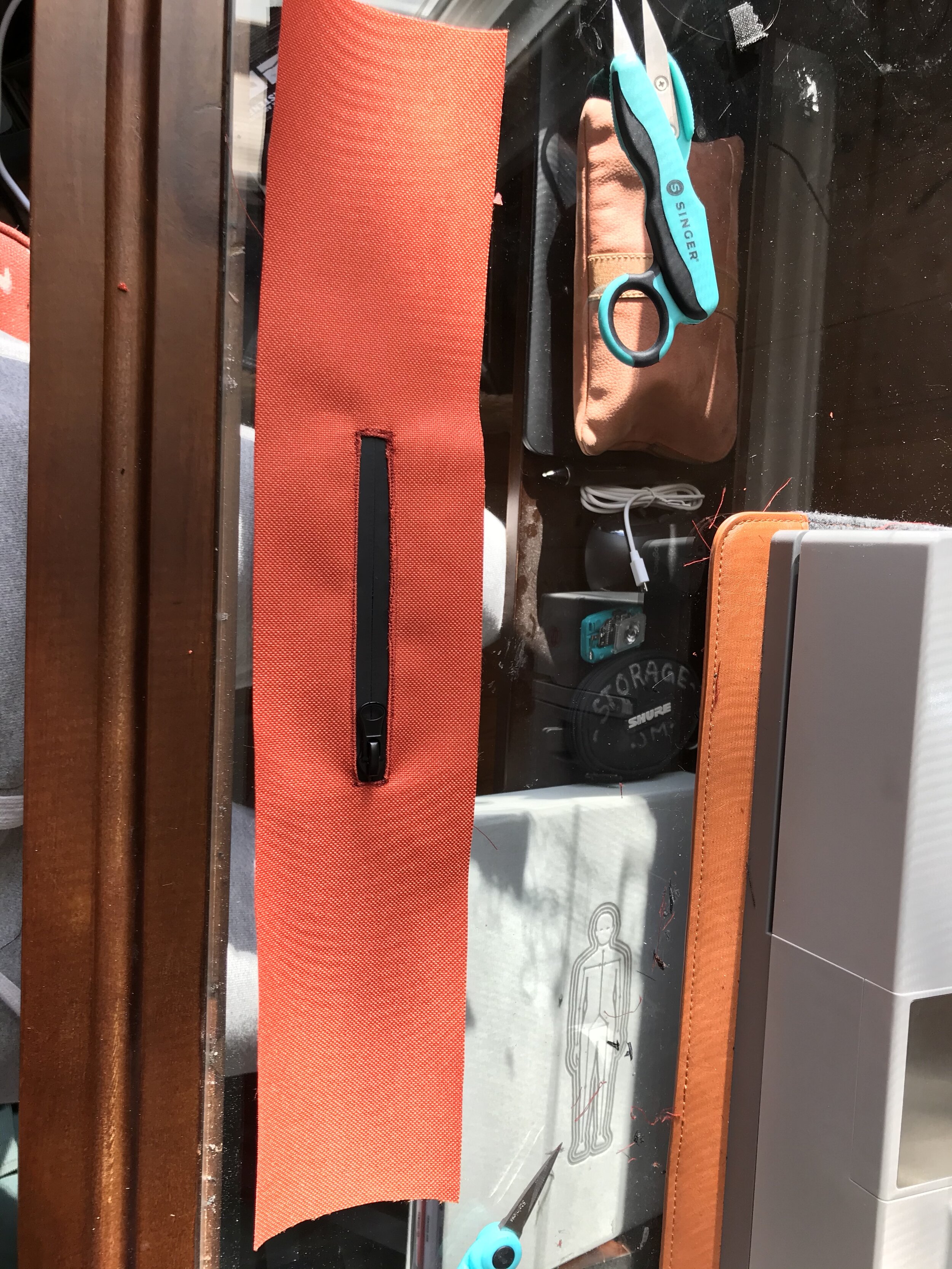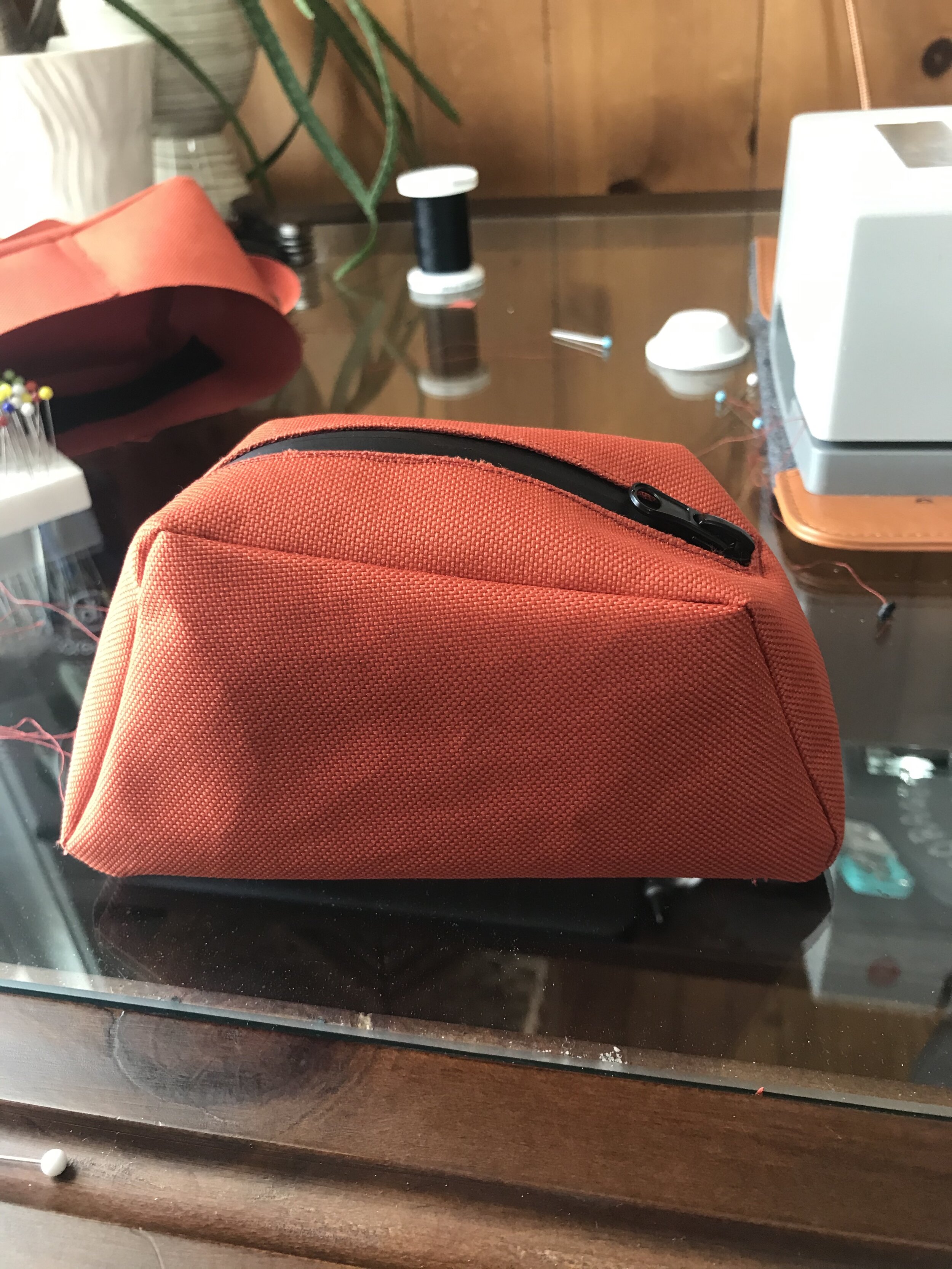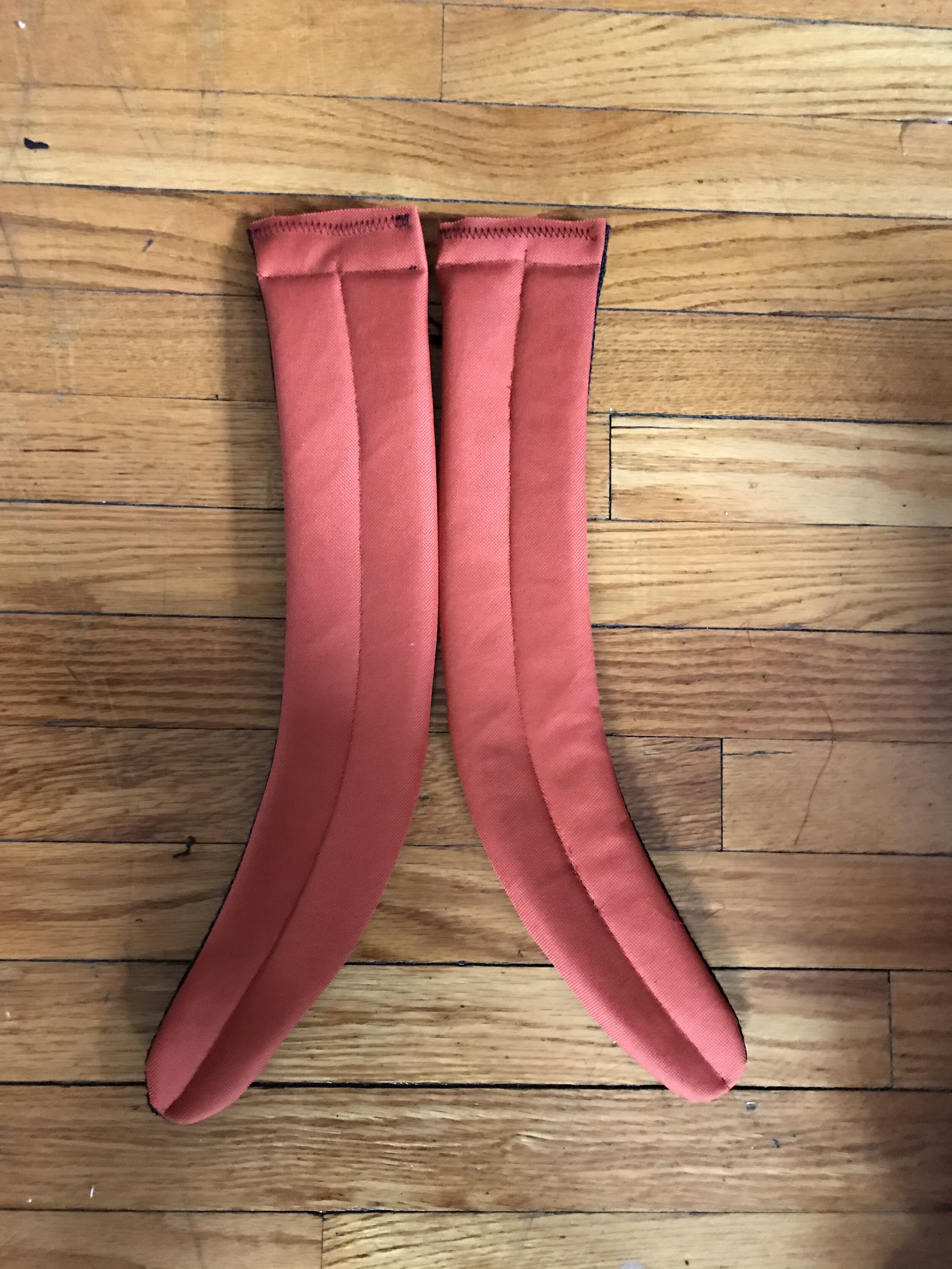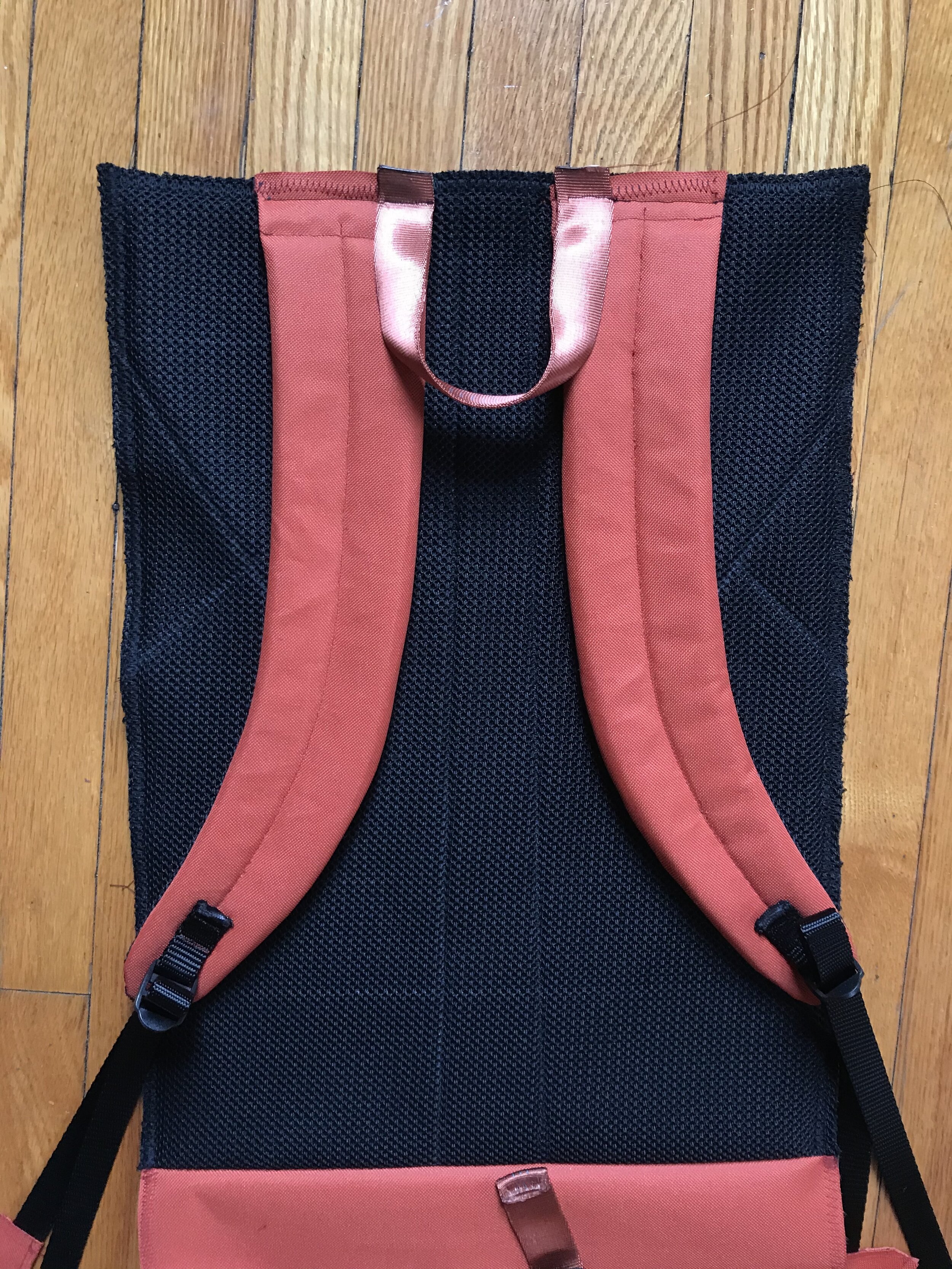
Crux Pack,
Winter 2021
The Carry-All Bag for Climbing and Photography
Adventure photography is often complicated by the abundance of photography-specific and sport-specific equipment that an individual carries. To remedy this, I designed a technical backpack—Crux Pack—that considers the holistic experience of taking photographs in rugged conditions; by providing organization and storage for both photography and sports equipment and improving the accessibility of these items while the bag is actively being worn.
Background
-
Adventure photography is often complicated by the abundance of photography-specific and sport-specific equipment that an individual carries. To remedy this, I aimed to design a technical backpack that considers the holistic experience of taking photographs in rugged conditions; by providing organization and storage for both photography and sports equipment, and improving the accessibility of these items while the bag is actively being worn.
-
Outdoor action sports, like rock climbing, have experienced tremendous growth in popularity over the last few decades, as the millennial generation seeks refuge from their mundane desk lives. This trend has been famously documented over the years: The Access Fund is but one organization dedicated to addressing the environmental concerns raised by an increase in activity at many of the world’s famous crags. As a new generation of mountaineers and alpinists come to fruition—further pushing the realm of possibility ever forward, there exists a need for documentation that can keep pace. The nature of these sports requires an abundance of safety equipment to be on hand at all times—leaving little room for photography equipment. However, the creation of an all-in-one organizational/storage product for both photography and technical sports equipment would provide an improved experience of documenting and enjoying the outdoors.
-
Regular backpacks don’t provide enough organizational divisions to store both photographic and climbing equipment properly, nor do they prioritize the protection of their contents. On the other hand, photography backpacks are limited, in that they only prioritize the storage and protection of photographic equipment, and climbing backs are similarly tailored to carry climbing equipment. The nonexistence of a bag that considers both activities implies that valuable gear must be sacrificed in order to facilitate some semblance of organization. This, in return, worsens both the experience of capturing photographs and the experience of exploring the outdoors.
-
This issue is likely a result of socioeconomic markets being as isolated as they currently are: Companies strive to be the best at what they do, have the largest market share, and differentiate themselves from their competitors, instead of developing products that can compete in multiple markets. At the same time, a product like the one I am proposing could be seen as too niche to be profitable, despite conflicting evidence. Thus, what I believe this all boils down to is that companies often underestimate the nuance of their consumers, meaning that they’re afraid to branch out, and step on each other's toes by creating a product that goes outside of their typical market.
-
Given the limited timeframe, accessibility to facilities, and materials that I have to work with over this semester, my goal is to make a semi-functional prototype of the backpack with as many of its intended materials as possible. The complexity of the backpack’s design will be similarly limited by the amount of time, money, and access to studio space I deem necessary for producing a finished product—this will likely be discovered after running some material testing and further research into the manufacturing processes needed to produce my final prototype.
-
My proposed project takes influence from many aspects of the outdoor sports industry and photographic industry, as it truly aims to balance the needs of both audiences within a singular body. With this in mind, my project will likely gain the interest of both outdoor equipment manufacturers (such as Patagonia, Arc’Teryx, The North Face, etc.) and photography equipment manufacturers (such as F-Stop, Chrome Industries, Manfrotto, etc.) who develop similar products, in addition to the consumer base of adventure photographers that would benefit from the realization of my project.
Research
I used a combination of market research, precedence research, user journey maps, user personas, and material testing to solidify my product’s functional, expressive, and aesthetic criteria. Given my lack of experience with patterning and sewing backpacks, I also utilized this stage of the process to experiment with making a very simple backpack from canvas and foam.
Ideation
I referenced my market and precedence research to gain inspiration for the initial brainstorming of expressive, functional, and aesthetic features. The ideas generated from this exercise were documented and organized using mood boards, rough sketches, concept sketches, annotated diagrams, material tests, and lists. I progressed with the most simplistic yet compelling idea and drafted a basic pattern on paper. Using this pattern, I stitched together an initial low-fidelity prototype of the Crux Pack to work out any kinks in the pattern, and to create a PFC that I could follow for a final assembly.
Concept Validation
I contacted a professional rock climbing photographer (Cameron Maier A.K.A Bearcam) for both concept validation and critique.
Yes, this idea is a good one; others have experienced the same struggles with organizing personal belongings/climbing gear and photography gear in the same bag.
Some existing bags come close to being a great solution, but these bags oftentimes have a separate camera gear organizer that comes out from the bag… This feature makes accessing the gear more clunky, as the interior case moves around and doesn't always align with the exterior window.
My design is a logical next step; it allows for customization with velcro dividers, and the organization is built into the bag. On top of this, there are features specifically tailored to climbing.
Iteration
I created a series of physical prototypes to test the fit of the backpack’s components and the utility of certain functional elements. To rapidly iterate, I used Fusion 360 and Adobe Illustrator to draft a pattern that I could easily reference for measurements and tweak, when necessary. Once I solidified my pattern, I exported my linework into a series of to-scale PDFs, which I printed and taped together to create paper patterns. These paper patterns allowed me to accurately mark and cut my fabric components, and prepare for assembly. To assemble the prototypes, I utilized fabric pins to align the various components, and a Singer Heavy Duty Sewing Machine/Serger to sew the seams.
